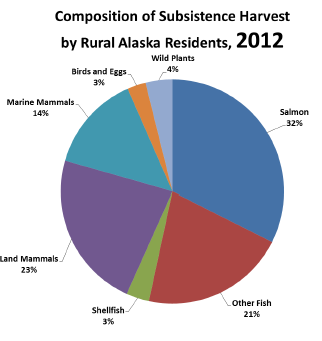The Alaska Department of Fish and Game’s Division of Subsistence (DOS) conducts annual field research to measure changes in the amounts of subsistence foods used in rural Alaska. The Alaska Family Nutrition Program’s SNAP-Ed team is partnering with DOS and the Center for Alaska Native Health Research (CANHR) to measure food security in rural Alaskan communities (indicator R6 in the SNAP-Ed Evaluation Framework). Communities in this area are often off the road system, thus capturing those households and communities missed during other food security statewide sampling efforts. The goal is to systematically analyze the impact of SNAP and Special Supplemental Nutrition Program for Women, Infants, and Children (WIC) benefits on a household’s level of food security.
In Alaska, especially in rural communities, the ability for a household to achieve food security, as defined by the U.S. Department of Agriculture, relies on both foods available through the market and those procured from the wild. The study includes interviews with individuals in the communities and participant observation. CANHR will develop, test, and analyze survey questions. Project results will be used to target nutrition and food security educational efforts more effectively to rural, predominantly Alaska Native communities.
This work also measures changes in societal norms and values by specifically looking at the beliefs on using a mixed economy of subsistence and FNS supplemental foods that can support healthy eating, active living, and obesity prevention.


